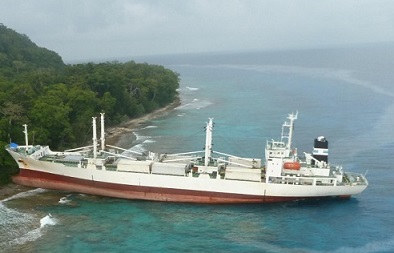
Attention to stranding and countermeasures - self refloating,securing the vessel or request for salvage
Stranding means when a vessel has run aground, it is accidental. Consequently, the vessel's double bottom area will probably suffer considerable damage, especially if the ground is rocky. The Master of a stranded ship should first secure the safety of the crew, Cargo, vessel, and the environment.
Assessment of urgency: The master should immediately asses the dangers to which the ship is exposed and the urgency with which assistance may be required from outside sources. It is better to over-react on the side of safety and pollution prevention than to delay action in the hope that the situation may improve. When making judgements, it should be assumed that the situation will not improve.
Assessment of urgency: The master should immediately asses the dangers to which the ship is exposed and the urgency with which assistance may be required from outside sources. It is better to over-react on the side of safety and pollution prevention than to delay action in the hope that the situation may improve. When making judgements, it should be assumed that the situation will not improve.


